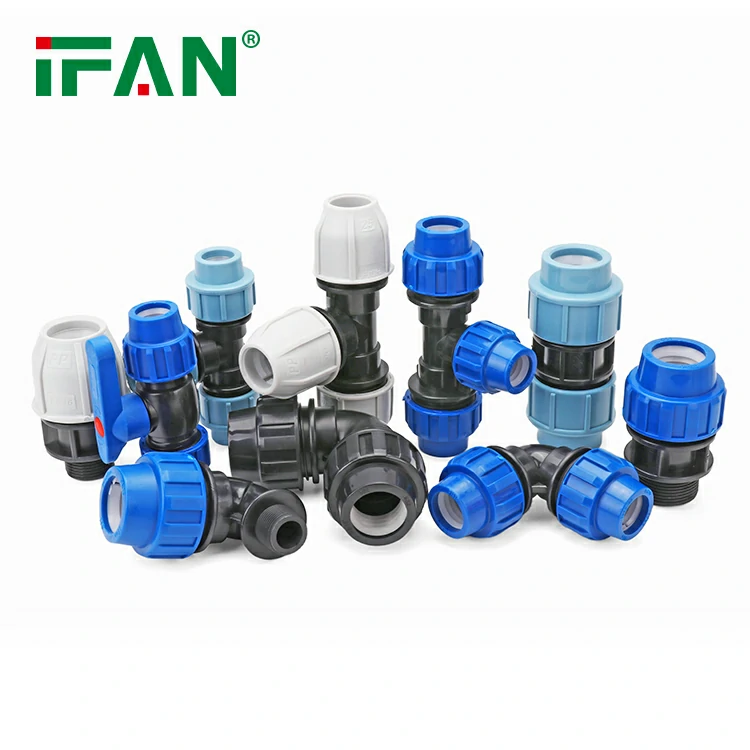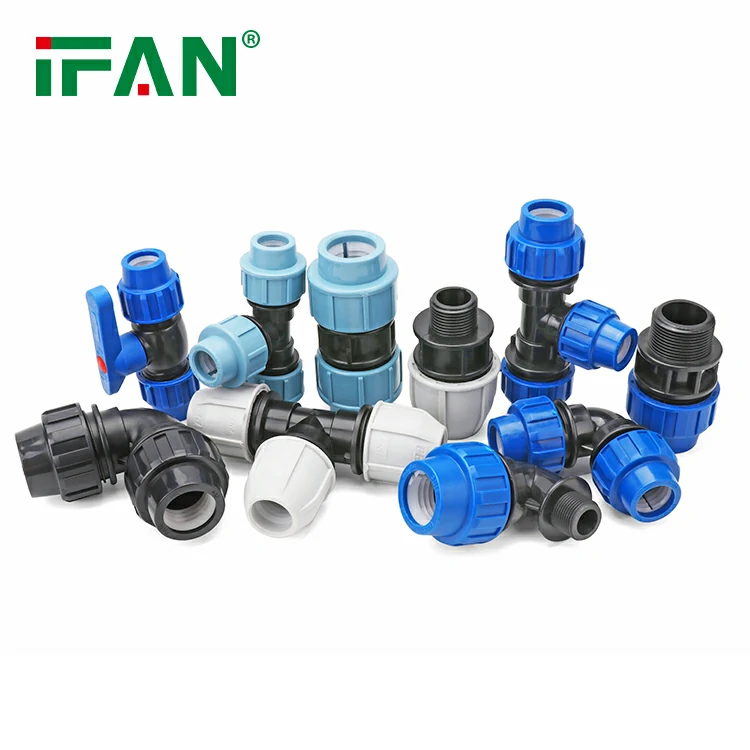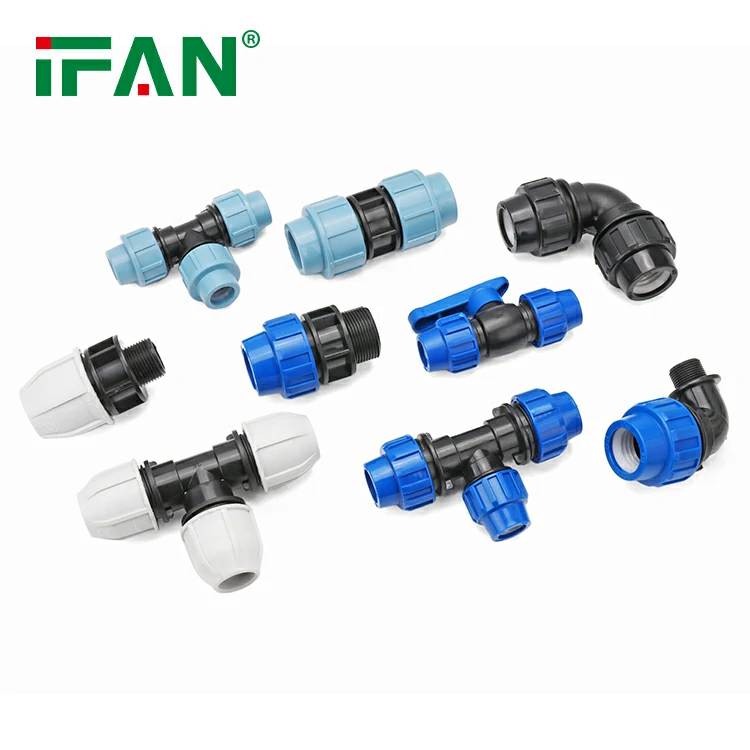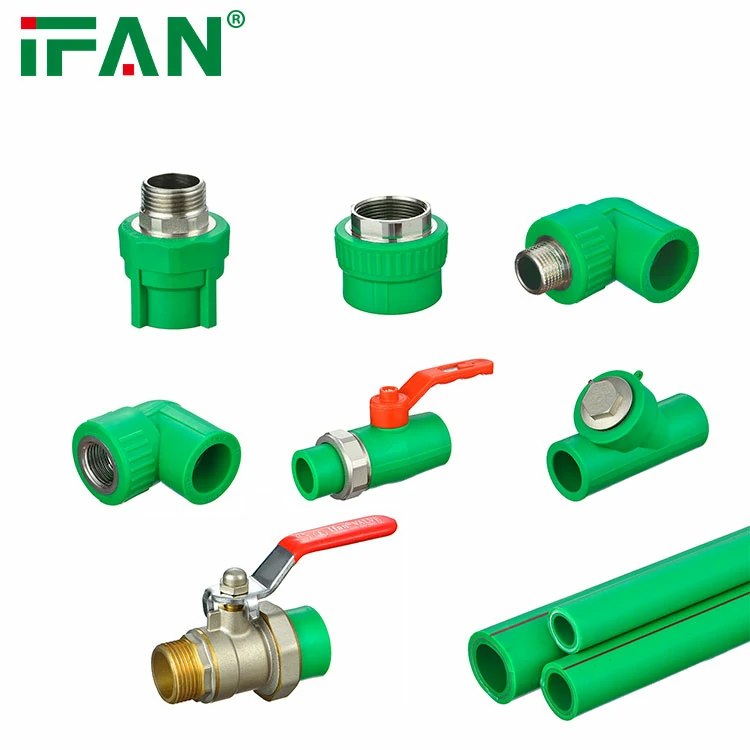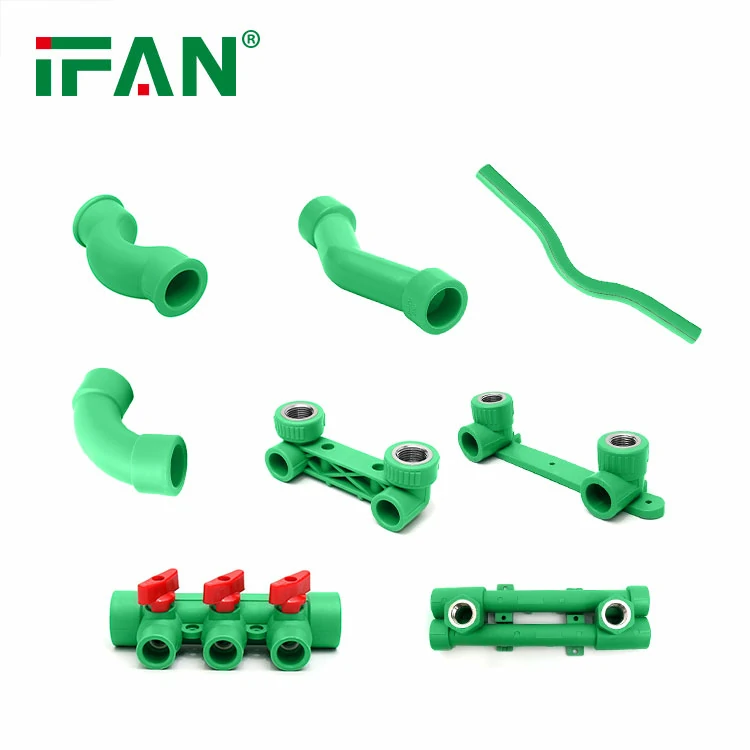IFAN factory 30+ years manufacture experience support color /size customization support free sample.Welcome to consult for catalog and free samples.This is our Facebook Website:www.facebook.com,Click to watch IFAN’s product video.Compared with Tomex products, our IFAN products from quality to price are your best choice, welcome to buy!
In modern plumbing systems, the material you choose for your piping and fittings plays a critical role in the efficiency, longevity, and safety of the installation. One material that has gained significant popularity in both residential and industrial plumbing is High-Density Polyethylene (HDPE). Known for its remarkable strength, flexibility, and resistance to corrosion, HDPE fittings have become an essential choice for various plumbing applications.
In this article, we will delve into the benefits of HDPE fittings in modern plumbing systems and why they are a top choice for many professionals.
What Are HDPE Fittings?
HDPE (High-Density Polyethylene) fittings are plumbing components made from high-quality plastic material designed to connect, divert, or regulate the flow of fluids through piping systems. These fittings are used in a variety of applications, including water distribution, drainage, gas, and sewage systems. They come in various forms, including elbows, tees, couplings, reducers, flanges, and more. HDPE fittings are typically installed using heat fusion techniques, which ensures a secure and leak-proof connection between pipes and fittings.
Benefits of HDPE Fittings in Plumbing Systems
1. Durability and Longevity
One of the standout features of HDPE fittings is their durability. HDPE is a highly robust material that can withstand extreme environmental conditions. HDPE fittings are resistant to corrosion, rust, and scale build-up, which are common issues with traditional metal pipes. These fittings are also resistant to wear and tear, ensuring that they last for decades, even in harsh conditions. HDPE piping systems can have a lifespan of up to 50 years or more, making them a long-term investment in any plumbing system.
2. Corrosion Resistance
Unlike metal pipes, HDPE fittings do not corrode when exposed to water, chemicals, or other substances. This corrosion resistance is particularly important in plumbing systems where the pipes are exposed to constant moisture or in applications where chemical exposure is frequent. The non-corrosive nature of HDPE fittings eliminates the risk of leaks or deterioration over time, which is a common issue with galvanized steel, copper, or iron pipes.
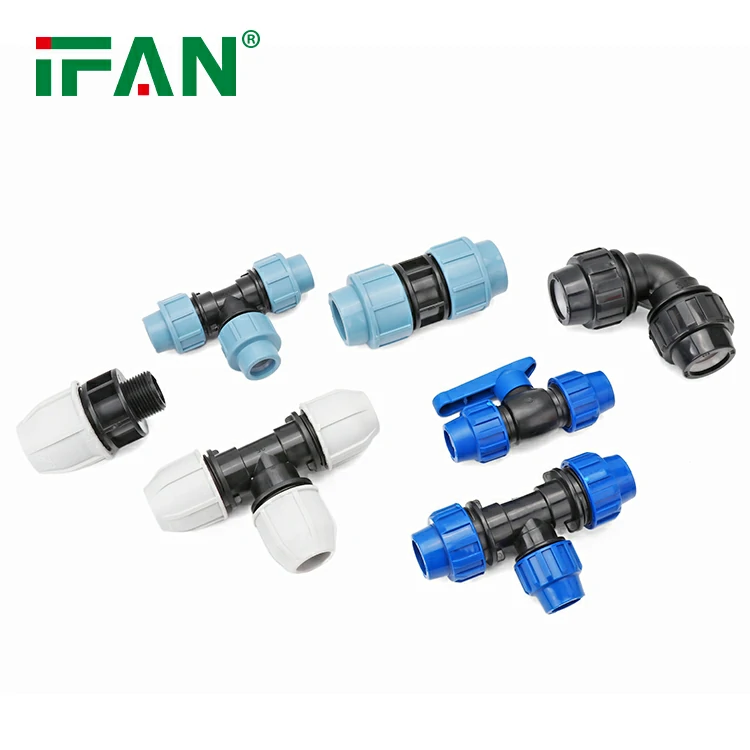
3. Chemical Resistance
HDPE is highly resistant to a wide range of chemicals, including acids, alkalis, and solvents. This makes HDPE fittings ideal for plumbing systems in industrial environments, such as chemical processing plants, wastewater treatment facilities, and agricultural settings. The chemical resistance of HDPE ensures that the fittings will not degrade when exposed to harsh substances, providing a safe and reliable plumbing solution for various applications.
4. Flexibility and Strength
HDPE fittings are known for their strength and flexibility, which makes them suitable for various types of plumbing systems. Unlike rigid metal pipes, HDPE pipes and fittings can bend and flex to accommodate changes in the layout of the plumbing system. This flexibility reduces the likelihood of breakages or leaks due to ground movement, temperature fluctuations, or other external forces. HDPE fittings maintain their integrity even in challenging environments, including underground installations or areas prone to seismic activity.
5. Lightweight and Easy to Handle
HDPE fittings are significantly lighter than metal fittings, making them easier to handle, transport, and install. This lightweight nature results in reduced labor costs and installation time, as the plumbing team can move and manipulate the components with ease. This is especially beneficial in large-scale projects, where the reduction in overall weight can lead to significant time and cost savings during the installation phase.
6. Leak-Free Connections
One of the key advantages of using HDPE fittings in plumbing systems is their ability to provide leak-free connections. HDPE fittings are typically installed using heat fusion, which creates a seamless bond between the pipe and the fitting. This fusion process results in a joint that is as strong as the pipe itself, ensuring that there are no weak points or potential leaks in the system. The result is a more reliable plumbing system with minimal maintenance needs over time.
7. UV Resistance
HDPE fittings are naturally resistant to UV radiation, making them a great option for outdoor plumbing systems. UV radiation can degrade many materials over time, leading to cracks, brittleness, and failure. However, HDPE fittings are designed to withstand exposure to sunlight and other environmental elements, ensuring they retain their structural integrity even in outdoor or above-ground installations.
8. Cost-Effectiveness
Due to the long lifespan and low maintenance requirements, HDPE fittings are a cost-effective option for plumbing systems. While the initial cost of HDPE fittings may be slightly higher than other materials, the long-term savings from reduced maintenance, repairs, and replacements make HDPE fittings a cost-efficient choice for both residential and commercial plumbing projects.
Types of HDPE Fittings
There are several different types of HDPE fittings, each designed for specific applications in plumbing systems. These include:
1. Elbows
HDPE elbows are used to change the direction of the pipe. These fittings are available in various angles, such as 45° and 90°, to accommodate the needs of your plumbing system.
2. Tees
HDPE tees are used to split the flow of fluid into two or more directions. These fittings are essential for creating branches in water distribution systems, gas systems, and drainage networks.
3. Reducers
HDPE reducers are used to connect pipes of different sizes. They are used when a system needs to transition from a larger pipe diameter to a smaller one, or vice versa.
4. Flanges
HDPE flanges provide a secure, leak-proof connection between pipes and equipment. They are commonly used in larger industrial systems where connections need to be robust and reliable.
5. Couplings
HDPE couplings are used to join two sections of pipe together. They are ideal for extending or repairing a plumbing system and are often used in both residential and industrial applications.
Installing HDPE Fittings in Plumbing Systems
The installation of HDPE fittings is typically done using a process called heat fusion, where the ends of the pipes and fittings are heated and then fused together to create a secure, leak-free connection. The steps for installing HDPE fittings include:
- Preparation: Clean the pipe ends and fittings to remove any debris or contaminants that could affect the fusion process.
- Fusion: Heat the pipe and fitting ends with a fusion machine, ensuring they are heated to the correct temperature.
- Joining: Once the ends are heated, quickly press them together to form a strong bond.
- Cooling: Allow the joint to cool and solidify before testing the system for leaks.
It’s important to follow manufacturer guidelines and work with trained professionals when installing HDPE fittings to ensure the system is secure and reliable.
Conclusion
HDPE fittings offer a wide range of benefits for modern plumbing systems. From their exceptional durability and chemical resistance to their ability to provide leak-free connections, HDPE fittings are an excellent choice for a variety of applications. Whether you’re working on a residential, commercial, or industrial plumbing project, HDPE fittings can help ensure the longevity, efficiency, and safety of your piping system.
FAQs
1. What are HDPE fittings made of?
HDPE fittings are made from high-density polyethylene, a durable and corrosion-resistant plastic material.
2. How long do HDPE fittings last?
HDPE fittings can last up to 50-100 years with proper installation and maintenance.
3. Can HDPE fittings be used outdoors?
Yes, HDPE fittings are UV-resistant and are suitable for outdoor installations, such as water distribution systems and irrigation systems.
4. How are HDPE fittings installed?
HDPE fittings are typically installed using heat fusion, which involves heating the pipe and fitting ends and then fusing them together.
5. Are HDPE fittings resistant to chemicals?
Yes, HDPE fittings have excellent chemical resistance and can withstand exposure to acids, alkalis, and solvents without degrading.

